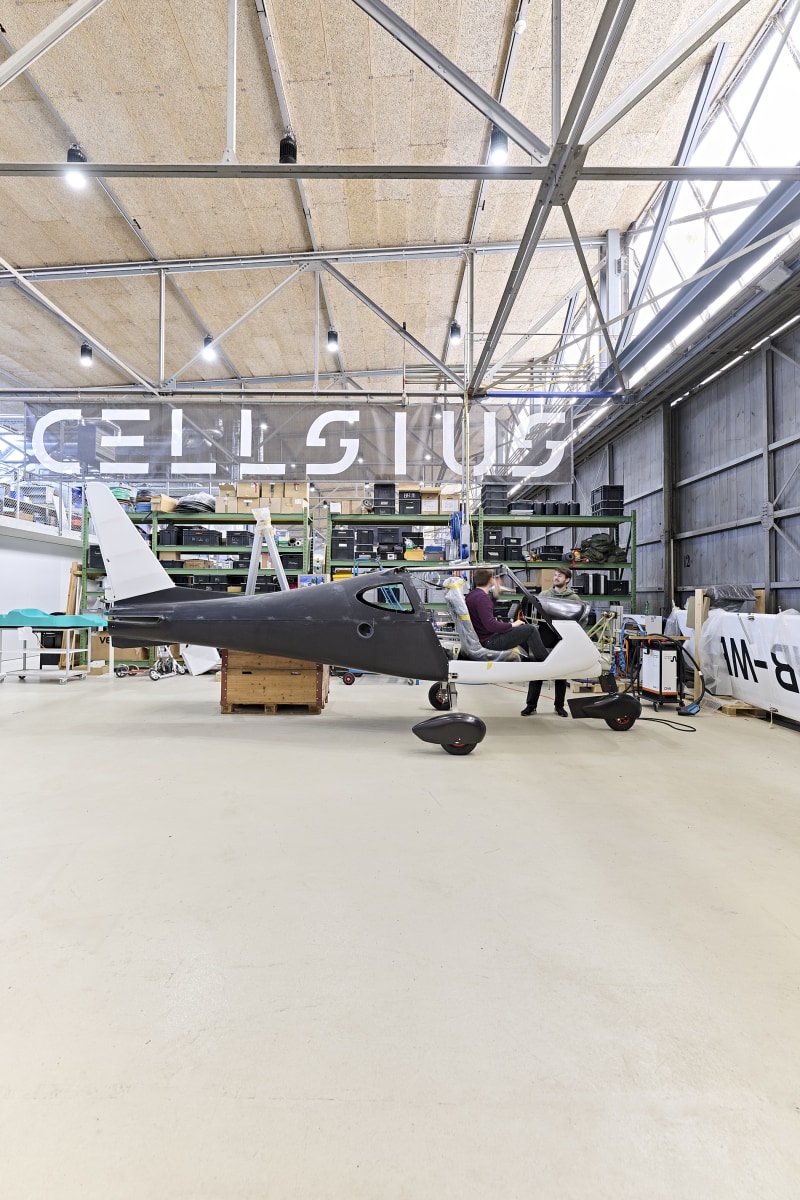Cellsius Takes Off without CO2 Emissions
Cellsius Takes Off With Zero CO₂ Emissions
After proving that battery-powered flight is possible, ETH students are now working on a hydrogen-based propulsion system.
So far, so fitting: step into the hangar, and you’ll see a plane — or at least its parts. The fuselage is painted, but the windows, propeller, and motor are still missing. It’s the Sling High Wing model, sold as a kit and now being customized and assembled by the students of the Cellsius project. For example, they’ve developed wings that are 35 centimeters longer to improve efficiency. Once the aircraft is fully assembled, the final stage of the certification process begins. “Countless ground tests will have to prove that everything works,” says Janik Röthlisberger from the Cellsius team. The goal: the high-wing aircraft is scheduled for its maiden flight in September 2025.
The Cellsius project is ambitious: the small aircraft is designed to fly entirely without CO₂ emissions — powered by a hydrogen fuel cell that generates electricity to drive an electric motor. From the battery module to the high-performance inverter to the motor itself, everything is being developed and built by the students. The aircraft will be able to fly for up to two hours and cover 200 kilometers. By the time it takes off for the first time, the hydrogen system will have completed countless simulated flights on the test bench: full power at takeoff, steady performance in cruise, and a safe go-around in case of a landing emergency. The results from these simulations help improve the system and demonstrate its reliability.
But isn’t hydrogen highly explosive and dangerous? “To get certified, the system has to be completely safe,” says Röthlisberger. “We work with high safety standards and take extensive precautions.” These include placing the hydrogen tanks beneath the wings and outside the fuselage, ventilation systems around the fuel cell to prevent the buildup of explosive gases, leak testing, and detailed risk and safety protocols.
All of this is to ensure that, one day, the Cellsius aircraft takes to the skies — but never goes up in smoke.










